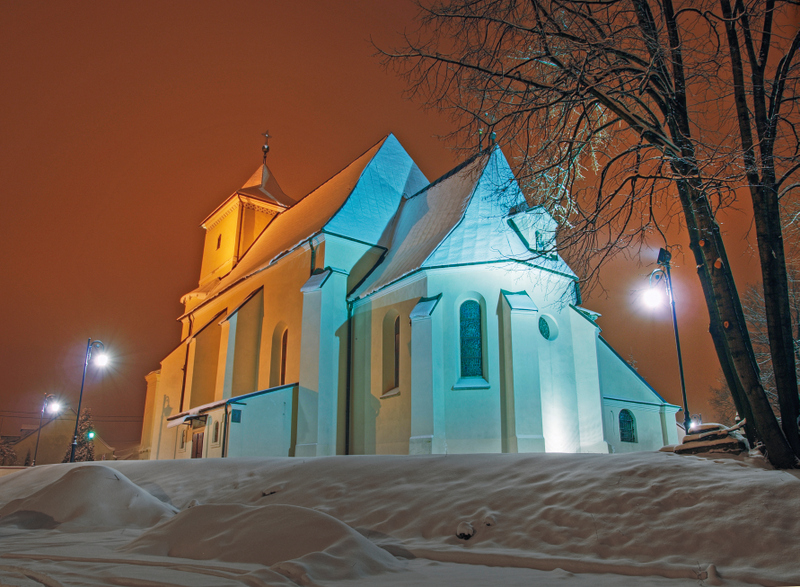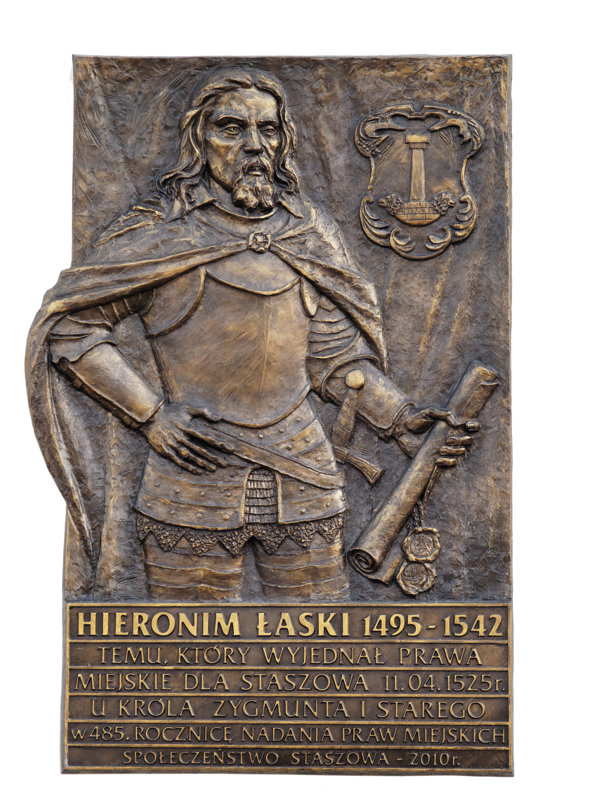
12th century – 1538 AD
 |
| Gothic St. Bartholomew church in Staszów, built in 1342 |
Staszów's history dates back to medieval times, when it was merely a small borough. It is possible that Staszów had already existed in the 12th century, when invading Tatars reportedly burned down a local wooden church[1]. However, the oldest surviving written source about Staszów was made in the year 1325 – it is a document relating to Peter's Pence (a payment made to the Catholic Church). Then-rector of Staszów, whose name is recorded only as Piotr, did not present his earnings and did not pay the Pence that year, for unknown reasons[2].
The name Staszów originates from a Polish name: Stanisław. In the 13th and 14th centuries, "Stasz" was commonly used as the diminutive form of Stanisław.
Stasz Kmiotko is the first known historical owner of Staszów. His first appearance in historic documents dates back to 1345. That year, the St. Bartholomew parish church in Staszów was consecrated by bishop of Kraków, Jan Grot[3]. Stasz Kmiotko was present at that ceremony. It is assumed that Staszów got its name from Stasz Kmiotko. However, there is one major flaw in that assumption: he could not have founded the borough in the 12th century, before the Tatar invasion, during which the wooden church of Staszów was burned down. Therefore, there is no solid answer to the question who was the actual founder of our town. It remains a mystery.
Staszów, both as a borough and later as a town, had many owners across the ages. Some of them were: Piotr Bogoria-Skotnicki, Dorota Tarnowska, Mikołaj of Kurów: the vice-chancellor of king of Poland Władysław II Jagiełło. In 1411, Staszów was given to Wojciech Jastrzębiec, a significant member of the Catholic Church (he was the archbishop of Gniezno, among other ecclesial functions). After Wojciech Jastrzębiec came Jan Rytwiański, in 1436. Rytwiański was the Kraków provincial governor; his efforts greatly contributed towards the growth of pottery industry in Staszów[4].
 |
| Hieronymus Łaski memorial plaque, located on the southern side of Staszów Town Hall |
On April 11, 1525, Hieronymus Łaski - owner of Staszów - acquired a royal permit for Staszów to legally host fairs three times a year: on the first Sunday after Ascension Day, on St. Bartholomew Day and on St. Ursula Day. The actual significance of that permit was the fact that Staszów has officially been recognized as a full-fledged town, elevating its status from a mere settlement[5]. The following year, on January 26, during a Sejm meeting in Piotrków Trybunalski, king Sigismund I issued a decree allowing citizens of Staszów to hold a fair each Thursday, which further cemented Staszów's position as a respectable town[6].
This early period of Staszów's history is marked by slow but steady development of small crafts and commerce. During Hieronymus Łaski's rule, Staszów paid the "czopowe" tax for the first time in 1538. It was a tax on beer, mead and booze. Paying that tax signified the town's importance. It was also during this period that Jewish immigrants first settled in Staszów.
Dariusz Kubalski Ph.D.
English translation by Michał Mróz
Footnotes:
[1] W. Siek, Opis historyczny parafii i miasta Staszów do 1918 r,, Staszów 1990, p.8
[2] Monumenta Poloniae Vaticana, vol I, ed. J. Ptaśnik, Cracoviae, 1913, p.155-156
[3] Zbiór dokumentów małopolskich, vol. I, Kraków 1965, issue 45, p.64-65
[4] W. Siek, Opis historyczny parafii …, p.12-14
[5] AGAD in Warsaw, Metryka Koronna, sign.38,f.288
[6] AGAD w Warszawie, Metryka Koronna, sygn. 39, f. 669-670


